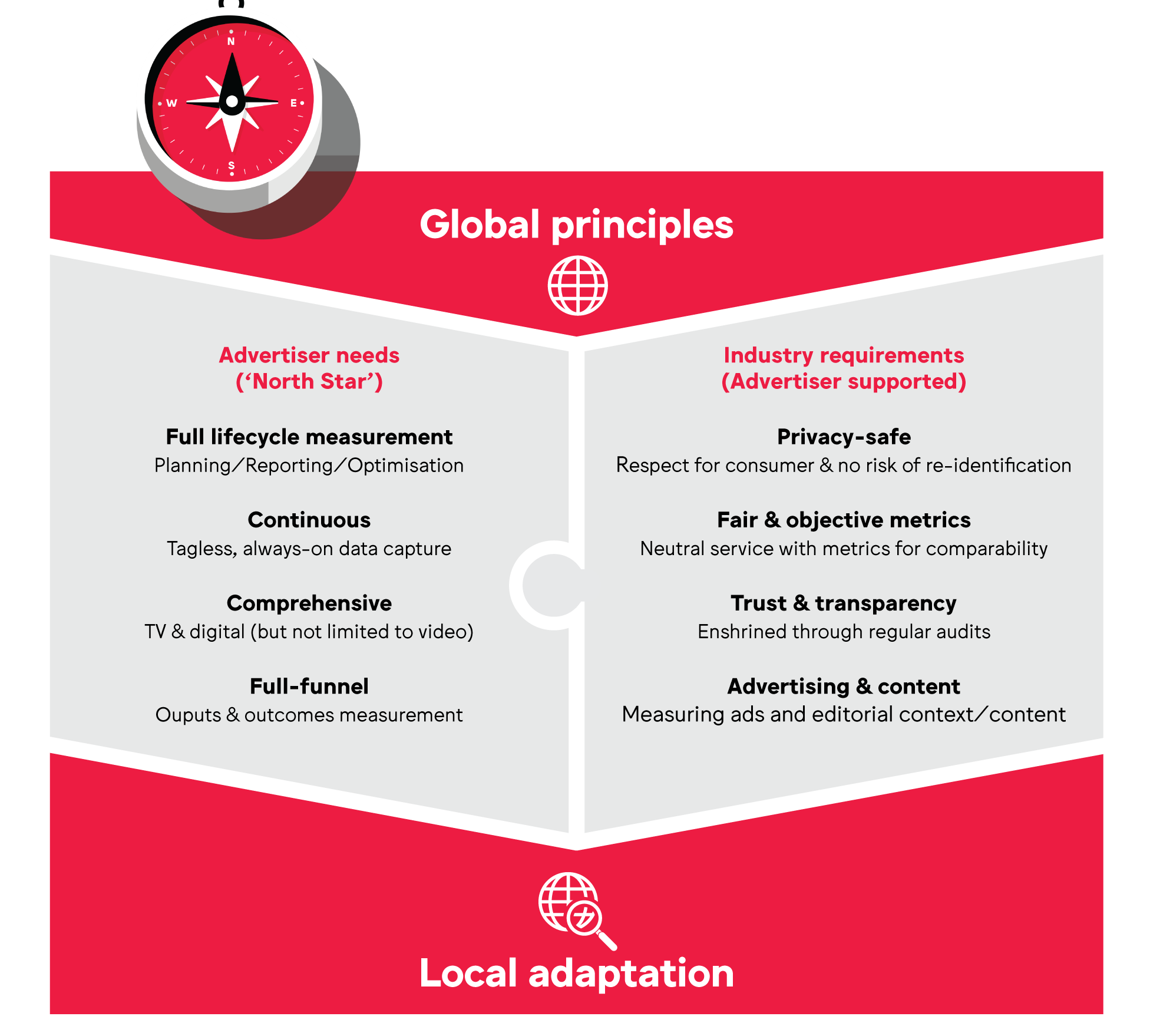Global advertisers unveil a collaborative new approach to cross-media measurement
UK and US to lead implementation following international peer review
WFA has unveiled an advertiser-centric Framework for cross-media measurement – the “holy grail” for marketers – accompanied by a proposed solution, designed to give advertisers a much greater understanding of the reach and frequency of their advertising efforts.
The Proposal was developed in partnership with digital platforms, including Facebook and Google, and will now be tested by the UK and US, with ISBA and the ANA respectively leading local efforts.
The WFA has worked with national advertiser associations over the past 18 months to create the Framework, which identifies advertisers’ cross-media measurement needs as well as the pragmatic principles that advertisers believe that all solutions should be bound by.
This has involved cross-industry consultation with advertisers, agencies, broadcasters, measurement companies and platforms. The goal has been to create a catalyst for local development of new solutions.

Alongside the Framework, the WFA is also publishing a real-world Technical Proposal for a cross-media measurement solution, which meets the principles outlined in the Framework, including on transparency, neutrality and auditing.
This has been developed in partnership with digital platforms and shared and discussed extensively with the industry. It utilises a panel and census approach (via publisher logs) to give advertisers far greater understanding of the Reach and Frequency of their campaigns across TV and digital media (including both video and other formats).
The Proposal leverages a Virtual ID (VID) and differential privacy methods to preserve privacy while preventing double-counting of impressions across media. In delivering improved cross-media frequency control, consumers will also benefit by not being unintentionally targeted by the same ad across different media channels, potentially addressing one of the key motivators behind ad blocking.
Critically, the Proposal acknowledges that measurement is a local business and requires considerable local governance alongside the need for some global (or ‘common’) components to drive consistency and scale. Any aspects of the proposal that require bespoke technology will be open sourced.
It has been tested via an international open comment and peer review exercise earlier this summer, organised by the WFA and involving several hundreds of the industry’s most prominent measurement professionals. This has allowed the wider industry to fully scrutinise, challenge and change the Proposal.
The baton has been passed on to national advertiser associations, and ISBA’s cross-media measurement group, ‘Origin’, and the ANA will now independently explore how the components in the Proposal can be adapted to suit local stakeholder needs, ahead of implementation in their respective markets. Validation efforts will place particular care and focus on how TV data will be integrated with digital data within the Proposal. Both initiatives will focus on ensuring the priorities of advertisers are met while also taking an approach that reflects the needs of broadcasters as well as the changing digital media landscape.
Several other markets and organisations are also looking closely at the components in the Proposal, with a view to possible implementation on the back of the US and UK work.
This announcement reflects nearly 18 months’ work, which was prompted by the WFA’s Global Media Board, comprising 14 key advertisers and associations. Measurement is a key priority for advertisers and the WFA is committed to providing an ongoing platform to share learnings and to develop the ideas and concepts outlined in both the Industry Framework and the Technical Proposal.
This approach has been supported by the whole WFA membership but the initiative has been steered by several prominent advertisers and advertiser associations, including ANA (US), ISBA (UK), Union des Marques (FR), OWM (DE), Deutsche Telekom, Mars, Mastercard, Nestlé, PepsiCo, Procter & Gamble, The Coca-Cola Company, Unilever and others. The Media Rating Council (MRC) has also been involved in this work throughout. …
… read on at wfanet.org
The Framework and The Technical Proposal are available here.
Originally a press release from the WFA
17th September 2020
The WFA Framework and Technical Proposal will be discussed in the context of ISBA’s Origin Project at the 2020 asi Virtual Conference on 2nd–6th November.